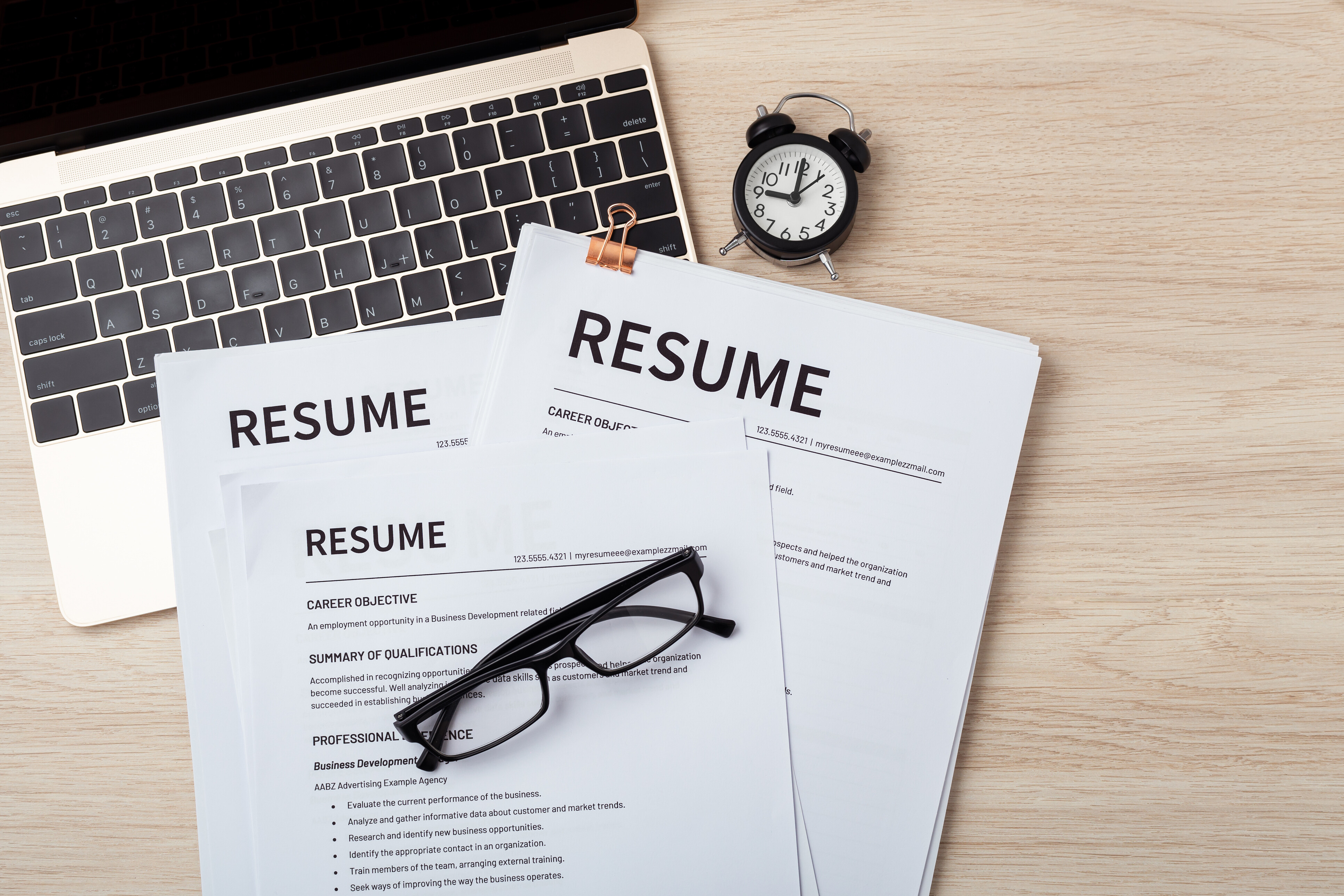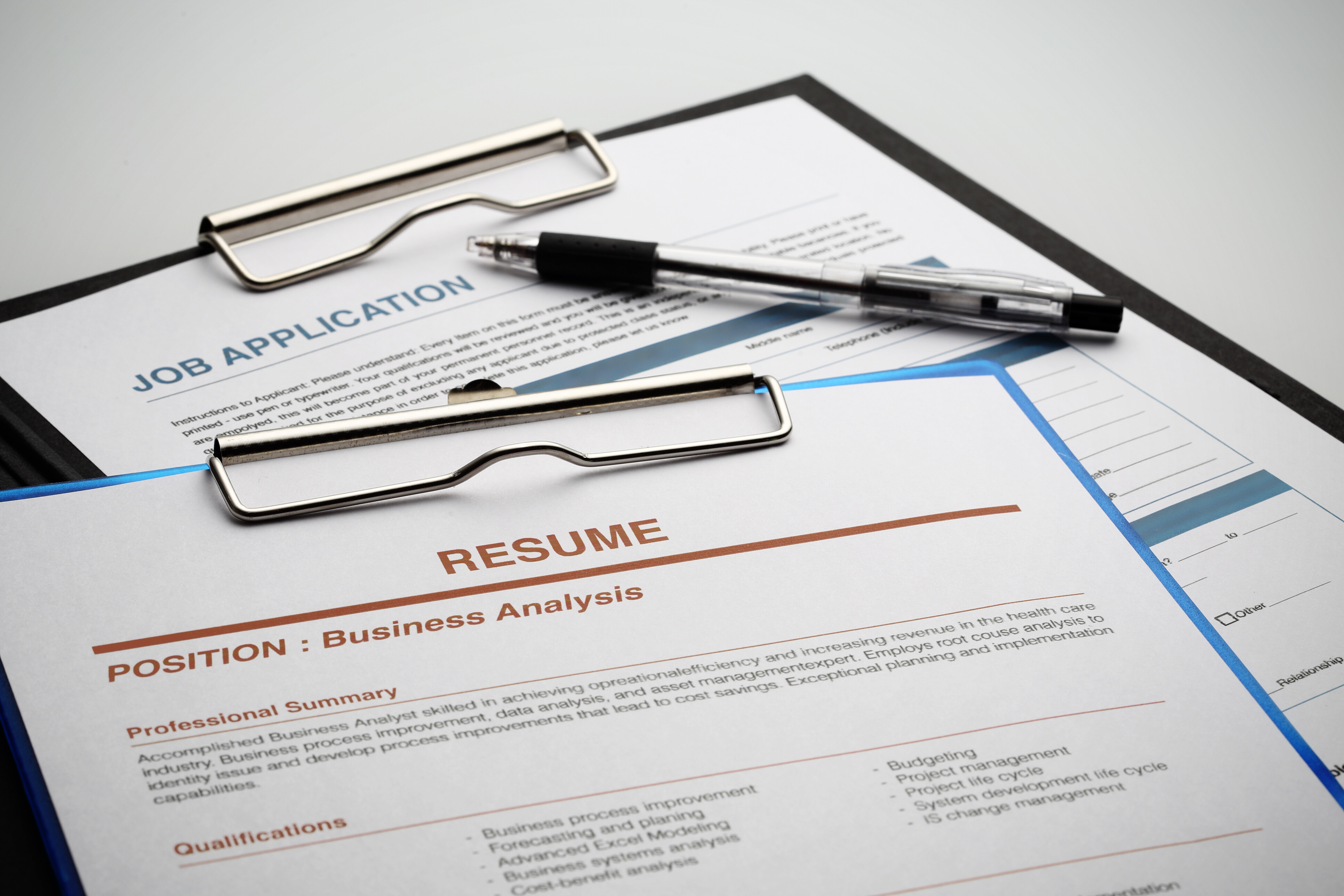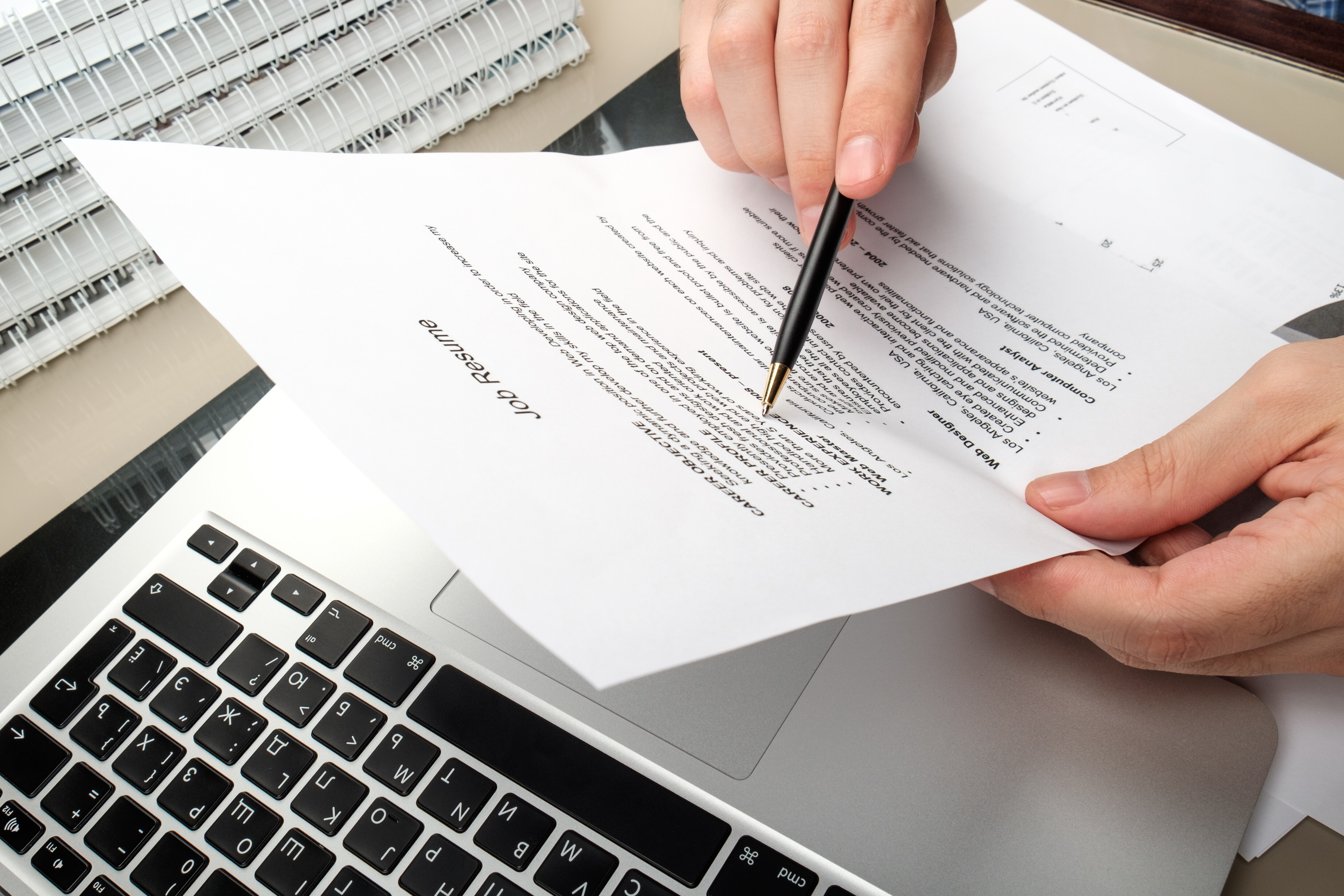- Home/
- Guides/
- Resume Writing/
- How to Write a Resume

How to write a resume: Land your next job with confidence
Learn how to craft a resume to stand out in a competitive job market.
Hire a resume writerPublished on
Key Facts
- Tailored resumes are crucial. Customising your resume for each job improves your chances of passing applicant tracking systems.
- Clear formatting matters. Simple layouts with clean fonts and structured sections help recruiters find key info quickly.
- List specific skills, not traits. Focus on technical or role-specific skills instead of vague personal qualities.
Learning how to write a resume is a crucial part of preparing for any new job role. In most cases, this will be the first thing a potential employer sees—and, like it or not, first impressions last, so you want to make a good one.
Most people overcomplicate their resumes, which not only makes the preparation of the document harder but also lowers its quality. Remember, in some cases, less is more!
Understanding how to build a resume that is easy to read and features all the essential elements is one of the keys to success and a great start in your new career. Let’s look at how to create a resume to get you a steady foot in the door for your next job role.
How long should your resume be?
Before we get into the specifics of writing a resume, it’s important to know the ideal length.
The theory that one-page resumes are the way to go isn’t entirely wrong, but it isn’t spot on either. The idea is to keep things succinct and on point, as potential employers don’t want to sift through a small novel for every applicant. That being said, one page might not cut it.
ResumeGo, a renowned global resume preparation service, ran a study and found that hiring managers were 2.3 times more likely to employ two-page resume applicants over a one-pager.
None of this means you should pad your resume for length or cut out vital information to keep it to two pages. Consider the rule of one page for entry-level workers and a two-page resume for everyone else.
 Print-ready resumes with clean formatting. (Source: iStock)
Print-ready resumes with clean formatting. (Source: iStock)
How to write a resume: Essential tips and tricks
Your resume could make or break your job application. Here are some tips to transform your resume from an ordinary document into a compelling tool that opens doors to new opportunities.
Words matter more than styling
While you may be proud of your unique-looking resume, employers hate overly complicated designs. The point of a resume is to communicate information clearly. If the recruiter has to hunt for it, your resume isn’t working well.
Choose a clean layout with clearly marked sections and have your most important information in the “F-pattern” along the left side of the page and the top corners. This is designed to match the way we skim documents, keeping whoever is reading its attention for longer.
Use one or two easy-to-read fonts, and ensure sections and title headers with bold job titles followed by a bulleted list of accomplishments. Ideal headers include:
- Education
- Experience
- Summary
- Skills
Add a single pop of colour to break up the text, and avoid photos of yourself, graphics, and logos. Images can cause issues if the employer uses software to assess applicant content.
The top third of your resume is the prime real estate and should be a snapshot. Feature everything the hiring manager needs to know there, including:
- Your contact information
- LinkedIn profile
- A professional summary
- Most recent job (if applicable)
- A summary statement (a brief paragraph that acts as your elevator pitch)
 Tailor your resume content to suit the job title and role. (Source: iStock)
Tailor your resume content to suit the job title and role. (Source: iStock)
Tailor each resume for each job
Using one generic resume for every job is a bad idea. Tailor the resume to each job and include words that match the keywords used in the job advertisement. This shows your potential employer that you understand what they are looking for and the role.
You don’t need to start from scratch with a new resume each time you apply for a job; make small tweaks that subtly mimic the employer’s language. This could be reordering your bullet points to match specific requirements in the ad or re-wording your pitch section.
A generic resume is often apparent and won’t interest anyone reading it. Customisation will also help when the recruiter uses an applicant tracking system. These systems are programmed to search for keywords to weed out irrelevant applicants. If the wording in your resume mirrors the job listing, you won’t be rejected in this initial stage.
If you want to take this one step further or customise your resume for a series of similar roles, find three to five listings for the position you want and then paste their text into a free online word cloud generator. This will help reveal the keywords you should be incorporating into your resume.
Highlight technical over general skills
The biggest thing recruiters look for in a resume is an example of your expertise. This makes a skills section vitally important. Place yours below the summary statement so that the knowledge that shows your value is apparent. Keep it short, and make sure all your attributes can be easily measured or demonstrated — the rarer or in demand for the field, the better.
Be specific; for example, if you are skilled at coding, name each language you are proficient in. Keep things relevant and leave out general skills. Most can use Microsoft Word; stuff like that won’t impress anyone. Understanding the difference between a skill and a personality trait is also essential. Being “highly motivated” is excellent, but find a way to work that into a different section of your resume.
 Review your resume thoroughly and revise each section to highlight relevant experience. (Source: iStock)
Review your resume thoroughly and revise each section to highlight relevant experience. (Source: iStock)
Provide evidence of your achievements
It is important to mention significant achievements in your previous roles because measurable results support your claims. If you have metrics that show how you increased revenue or productivity, they will carry substantial weight in the eyes of the employer.
If applicable, include any of the following:
- Industry awards
- Cultural improvements
- Positive customer feedback
- Company recognitions
- Mentoring
Anyone can make a claim, but backing it up with proof will put you ahead of the crowd. Hiring managers want to see what the skills you claim to possess have done.
What to leave off your resume
A concise resume is a good resume. While the information above details the elements that should be included, the following points should be avoided to keep your document sharp and to the point and avoid any elements that may hinder your chances at success.
- Don’t list your whole career history. Keep it to recent relevant information and leave out the fast-food gig you had when you were 15.
- Leave it off if your graduation or certification year is beyond the 20-year mark, as it could unnecessarily date you.
- Skip the mailing address.
- Leave off references until they’re requested.
- Leave off social media account addresses unless they are directly relevant to the role you’re applying for
- Eliminate pronouns; all resumes should be written in silent first-person.
Need help writing a resume? Find an expert at Airtasker
If you want to play it safe and ensure you have the perfect resume to make you stand out from the crowd, enlist the help of a resume-writing expert. You can find a Tasker who specialises in making sure your LinkedIn profile is up-to-scratch, as well as someone who can make sure you have an attention-grabbing cover letter.
If you would like some tips on how to write a stellar cover letter for yourself, check out our five tips on how to write a cover letter for some handy information and make that new job yours today!
FAQs on Resume Writing
Get recruiters hooked in with an opening heading statement. Start with the original job posting and reference the job description, matched against your experience. The job posting will determine which resume keywords you can reference in your opening and throughout the resume, along with any other information you will likely need to include.
Keep the important information up the top and include your contact information, LinkedIn profile, a professional summary, your most recent job (if applicable), and a summary statement, which is a brief paragraph that acts as your elevator pitch.
The best way to end a modern resume is to include the statement “Professional References upon Request.” This lets the recruiter know that you have professional references that can attest to the information in the document, without cluttering up your resume by including their contact details (which may be unnecessary). This statement implies that your professional contact information is available and waiting.
A strong, high-quality resume is one that performs the job of convincing the reader that you are the candidate they should interview to fill their role.
To do this, your resume should do the following:
Summarise your unique value
Communicate clearly and with confidence
Contain language relevant to the role (keywords)
Be concise
Offer evidence for your skills
Offer your contact information
A good resume offers the right amount of relevant information to convey the essential aspects without making things hard for the person tasked with assessing it. If you present yourself in the best possible light, clearly and honestly, your resume will position you well for a new role.
Find resume writers, fast
Find a resume writer
Related articles




